3: Circadian Rhythm
- Last updated
- Save as PDF
- Page ID
- 155931
Introduction
Why are you lying awake, staring at the ceiling? It’s 10:00 a.m. and you stayed up all night to study for an exam, arrived at your early morning class thinking about nothing more than how quickly you could get back to your bed, completed the exam in spite of the occasional head bob, then rushed home to at last jump into bed (Figure 3.1). Yet there you are, not only having flashbacks from the exam pages but also criticizing yourself for something silly you said to your crush as you were leaving the classroom. In other words . . . you are wide awake! You can thank your circadian rhythm.
Circadian Rhythm and Sleep Pressure Don’t Always Agree
There are brain cells that drive your body to go through an activity cycle that is roughly twenty-four hours in duration. The cycle is your circadian rhythm, and those brain cells are like a clock inside your body. Almost every creature on earth has a similar cycle; even plants and insects exhibit these rhythms.
The 2017 Nobel Prize was awarded to researchers who Figured out how genes in the fruit fly create a rhythm of cell activity that is approximately twenty-four hours. They also clarified how similar mechanisms are utilized in human cells to create our biological clock. The internal clock provides the daily timing for sleep, body temperature, blood pressure, mental clarity, bowel movements, hormones, athletic performance, and more (Figure 3.2). And while light and dark have a significant impact on this circadian rhythm, the cycle will persist even if a creature is in total darkness for days.1
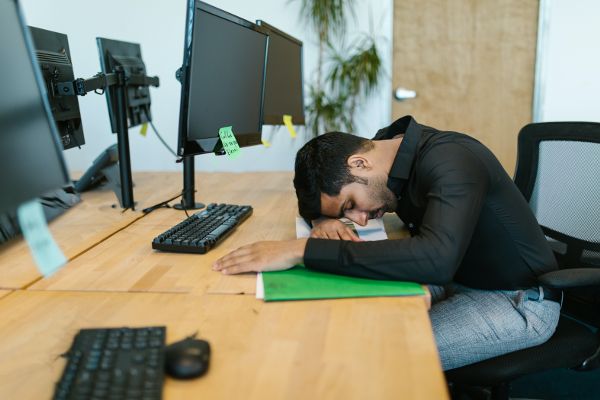
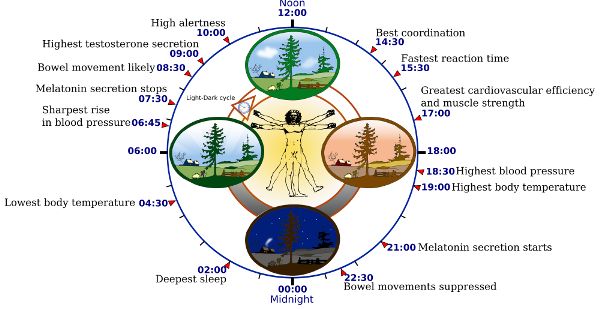
Your body has another process that controls whether or not you are sleepy: sleep pressure, the drive to sleep depending on how long you have been awake. Your brain breaks down adenosine triphosphate (ATP) to get energy (Figure 3.3). This reaction causes an accumulation of adenosine. Every hour you are awake, adenosine builds up, binds to adenosine receptors, and activates sleep-promoting regions of the brain, while at the same time, adenosine inhibits alert-promoting brain regions. Through these pathways, adenosine puts “pressure” on the brain to go to sleep. During sleep, adenosine will get broken down, recycled, and removed from the brain, so your sleep pressure drops to its lowest point during the final minute of your sleep. Then with each waking moment, sleep pressure continues to build, and the cycle continues.
As you likely guessed from our all-nighter scenario that left you wide awake at 10:00 a.m., circadian rhythm and sleep pressure have an interaction. By staying up all night, sleep pressure builds continuously until we have to struggle heartily to stay awake. But circadian rhythm drives the brain and body to be alert in the midmorning hours, even if we are sleep deprived. You likely have also experienced this circadian rhythmicity on a day when, after a perfectly sound night’s sleep, you find yourself feeling quite drowsy around 2:00 p.m. This is the internal clock of your circadian rhythm giving you the healthy body signal that it is nap time (Figure 3.4).
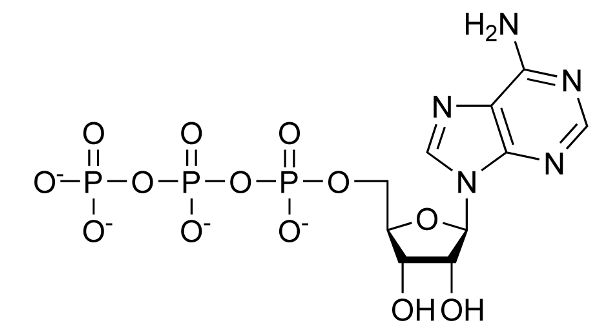
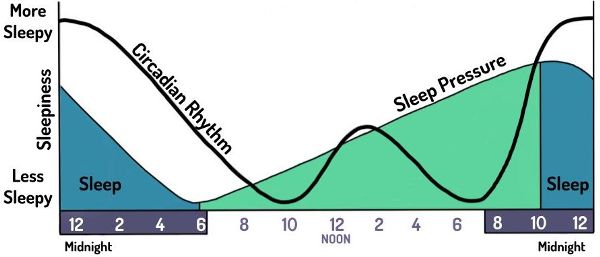
How Many Hours Are in a Day?
In 1938, two sleep science pioneers were so intrigued by the sleep-wake cycle that they spent a month 140 feet (over 42 meters) below ground in Mammoth Cave in Kentucky. There was no outside light, and the temperature remained at 54 degrees Fahrenheit (12 degrees Celsius) in the ana (Hawaiian for “cave”).
One of their primary interests was what we now call the circadian period—the time it takes to complete one cycle of the circadian rhythm. In other words, away from the influence of light and other cues that tell us when a day begins and ends, how long would it take for the body to go through a cycle of its natural biological rhythms before starting over for the next “day.” These University of Chicago researchers, Professor Nathanial Kleitman and his student Bruce Richardson, recorded, among other things, fluctuations in body temperature, hoping to gain insight into the body’s internal connection to the twenty-four-hour day (Figure 3.6). “Internal” in this case refers to something that would drive the circadian cycle without any external cues, such as daylight. Based on sleep-wake cycles and body temperature fluctuations, they found their biological rhythms were in fact longer—by one to four hours—than twenty-four hours. We now know they were on track with this conclusion, as given a setting not influenced by external cues such as light, the human circadian period is about twenty-four hours and fifteen minutes. This means that left to our own devices, each night, we would fall asleep fifteen minutes later. After just eight days of this, rather than falling asleep at midnight and arising at 8:00 a.m., those times would shift to 2:00 a.m. and 10:00 a.m. The time shift would continue this way forever. Eventually, you would be falling asleep in the late afternoon and awakening several hours before sunrise. We will turn our attention to sunlight to explain why we are saved from that daily shift in our schedule.

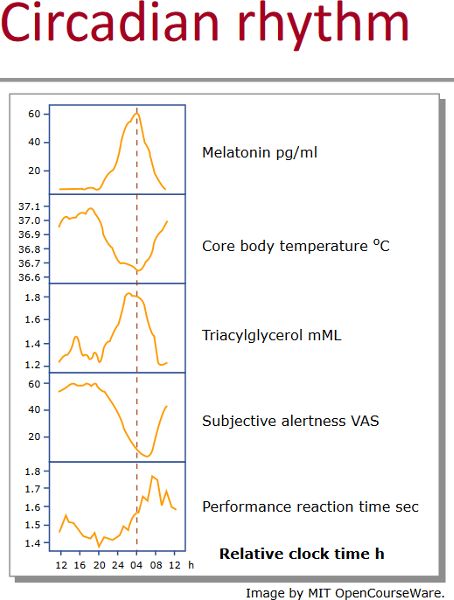
Sunlight, Larks, and Night Owls
Thankfully, sunlight has a strong influence on our circadian rhythm. Exposure to light in the morning synchronizes it with our planet’s solar cycle, thus trimming those fifteen minutes off our circadian period. Even artificial light, social activity, noise, temperature, and food impact our internal clock (Figure 3.7). These cues are called zeitgebers, from the German for “time givers.” Part of the success of Kleitman and Richardson’s work in the cave was due to their being away from major zeitgebers, so they could experience what the internal clock would do in the absence of most external influences. Being isolated from zeitgebers puts a person in a “time-free” environment. They do not know the time of day or night or even how many days have passed.
In the decades since Kleitman and Richardson, circadian rhythm studies have often emphasized the importance of time-free settings in order to substantiate the theory of the internal clock working on its own. In some protocols, male participants are directed to shave their faces at varied intervals so their “five-o’clock shadow” will not provide any clues about the time of day or number of days passing. In the absence of these types of zeitgebers, numerous investigations have verified that our clock signal is generated inside of us (endogenous), but where exactly is its control center?
Animal studies have demonstrated that the suprachiasmatic nucleus (SCN), a tiny structure in the brain, is necessary and sufficient to create the circadian rhythm (see chapter 2). Scientists removed the SCN from animals that previously exhibited healthy circadian rhythms, and their rhythmicity disappeared, suggesting the SCN is necessary to generate the circadian rhythm. Another procedure involved transplanting the SCN from one animal to another. The SCNs from animals with long circadian periods (more than twenty-four hours) were transplanted into animals with short circadian periods (less than twenty-four hours), and vice versa. Consequently, the animals’ circadian rhythms shifted to be aligned with their new SCN, implying the SCN is sufficient for generating circadian rhythm. But the SCN is only one structure along the pathway of signals that keeps the body on the approximately twenty-four-hour rhythm.

In the dark, a signal from the paraventricular nucleus of the hypothalamus (PVH) activates a circuitous pathway to the melatonin-releasing cells of the pineal gland (Figures 3.8 and 3.9). The signal travels from the PVH, down into the upper thoracic region of the spinal cord, through the superior cervical ganglion (a little ball of neurons in the neck), and finally up to the pineal gland, causing it to release melatonin, which is a circadian rhythm–setting molecule that tells your brain it is time to sleep. Then when light shines on the eyes, an electrical signal travels along the optic nerve to the SCN—our internal clock—which is also a part of the hypothalamus. In the presence of light, especially sunlight and blue light, the SCN sends a signal to the PVH and inhibits the melatonin-producing pathway. This lets our brain know it is time to be awake. We are diurnal (active during the day), so this pathway keeps us alert during the daytime hours. In a nocturnal (active at night) animal, the melatonin release/inhibition pathway is similar to ours, except opposite in one regard: the response to light is to induce sleep and the response to dark is to bring about alertness and activity.
Since this pathway of disrupting melatonin secretion begins with light shining on the eye, it can be surprising to find that some blind people do have their circadian rhythm entrained to the sunlight. It is because not all the cells in the retina, a layer of tissue lining the inside of the back of the eye, transmit visual signals: some ganglion cells carry light-signal information from other retinal cells to the brain for processing visual images. But another type of retinal ganglion cell contains melanopsin, a light-sensitive pigment, and in addition to responding to light themselves, these cells carry the light information to the SCN for circadian rhythm light entrainment.
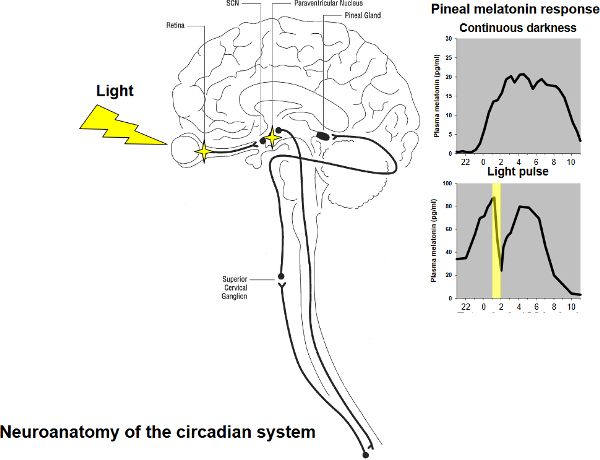
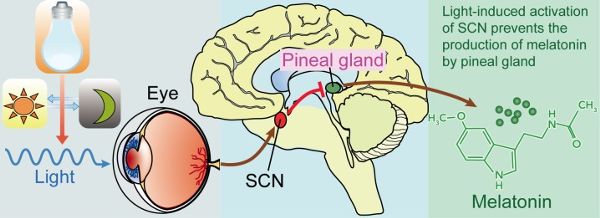
In other words, there are different types of retinal ganglion cells, which perform different functions. If a person’s blindness was caused by something that left the melanopsin-containing ganglion cells functioning, they will be able to maintain their circadian rhythm in sync with the sun. However, it is important for these individuals to wear dark sunglasses in daylight because they will not have the pupillary constriction (the shrinking of the pupil) that would protect their retina from the sun’s damaging rays. For some blind people, their melanopsin-containing ganglion cells do not function, so sunlight does not regulate their circadian rhythm and thus they struggle more with maintaining a twenty-four-hour circadian rhythm. The US Food and Drug Administration and the European Medicines Agency have approved a drug that activates melatonin receptors as a treatment, and some research also suggests that melatonin supplements, when dosing and timing are appropriate, improve circadian rhythmicity in blind people.
In some parts of the world with short periods of daylight in winter, circadian rhythm disruptions are understandably more common and are often associated with poor sleep quality (Figure 3.10). Complicating the situation is seasonal affective disorder (SAD), a type of depression that most often begins when the weather becomes cloudier (blocking the sun) and/or daylight periods get shorter. There are interactions between the circadian rhythm pathway and pathways that involve the release of molecules like thyroid and serotonin, which affect mood. The association of depression with poor sleep further compounds the challenge of SAD. In these regions with darker days, it is helpful to incorporate various forms of light therapy, including working in front of light boxes and installing classroom lights that simulate a bright spring day at noon (Figure 3.11).


Regardless of where they live, some people find their circadian rhythm is naturally shifted so they fall asleep in the early evening and wake up before dawn. These folks are sometimes referred to as larks (“morning people”), while their counterparts, the night owls (“night people”), fall asleep after midnight and wake up much later in the morning, maybe as late as noon (Figure 3.12). These are two different chronotypes (a word that comes from khronos, the Greek word for time). While sometimes these bedtime patterns are age-related, such as the elderly lark or teenage night owl, chronotype is also a gene-based timing pattern for when a person naturally feels sleepy. The genetically determined chronotype usually persists regardless of age.

About 40 percent of humans are larks, about 30 percent are night owls, and the remaining 30 percent fall in the middle. This genetic variation within our species is quite inconvenient in our modern world, which operates mostly around a nine-to-five workday. It is especially difficult for the night owls, who have to start engaging their brain several hours before they are metabolically ready every morning. It is unfortunate that our society does not accommodate different chronotypes, especially considering the health consequences (increased heart disease, diabetes, brain disorders) and accidents associated with disrupting a person’s natural circadian rhythm. Considering all this may make you wonder why the different chronotypes exist. Yet looking to our tribal ancestors, these different chronotypes make perfect evolutionary sense. If it is time for the tribe members to sleep, the safer outcome in terms of avoiding attack during sleep would be to have a few members awake late at night and a few alert and functioning before dawn. Thus the larks and owls were the revered sentinels (Figure 3.13). This is not much solace for night owls who have to catch the bus at 6:30 a.m. to get to an 8:00 a.m. class, but there are coping strategies. Chapter 6 contains a discussion of these circadian rhythm disorders, referred to as advanced sleep-wake phase (in larks) and delayed sleep-wake phase (in night owls). Tips for working with each of these disorders are in chapter 1, which also includes details about orange versus blue light (such as from a computer screen) and their effects on the circadian rhythm.
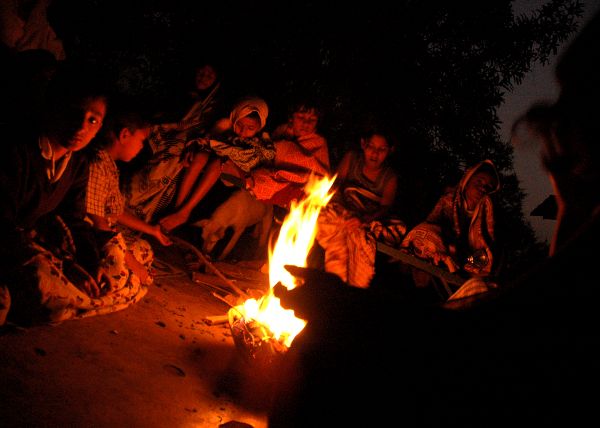
Derailing the Circadian Rhythm
For those who are neither larks nor night owls, there still are plenty of challenges to maintaining the circadian rhythm. And deviating from the earth’s rotational rhythm and natural daylight hours comes at a great cost. Even a once-a-year shift forward in the clocks can be deadly, as seen in the US with the significant increase in deaths from heart attacks and accidents on the Monday after the beginning of daylight savings time. Russian researchers also claim their country had an enormous increase in heart attacks and suicide rates on that day, and for that reason, Russia and many countries are abandoning the daylight savings time shift. But if it causes so much harm, why and where did it begin?
This shifting of the clock time—in the US, setting it ahead by an hour in March and then returning to standard time in November—originated in different periods of history, and independently in many countries for varied reasons. For example, a New Zealand entomologist in the late 1800s wanted more evening hours to find insects, and the Germans during World War I hoped it would help their war effort. Currently, only a little more than a third of countries in the world engage in this practice. Many nations—based on science and as a reflection of their value of health, safety, and productivity—are making the move to ditch the practice of shifting the clock.
Regardless of time zone, many people have to live by a different clock because of their work hours. While some have the luxury of a 9:00 a.m. to 5:00 p.m. workday, a shift worker may have to work through the middle of the night (Figure 3.14). More challenging still, some shift workers have weekly rotations in their shifts, from daytime to nights to mornings. A night shift might be from 5:00 p.m. to 1:00 a.m., with the morning shift from 1:00 a.m. to 9:00 a.m. Shift work is associated with devastating health problems such as increased rates of cardiovascular disorders, depression, diabetes, and cancer. The World Health Organization has listed shift work as a probable carcinogen, as it is associated with cancer. They state this is due to the health damage that comes with disrupting the circadian rhythm.

One of the recommendations to help shift workers is to eliminate the weekly rotation between shifts so the body does not have to experience the equivalent of traveling through eight time zones every week and never settling on any circadian rhythm. Science indicates that if rotation is necessary, the shifts should be rotated clockwise: from day shift, to night shift, to morning shift. This movement, while not at the same magnitude, is at least in the same direction as our internal circadian rhythm, which is fifteen minutes longer each day, making us naturally want to go to bed and wake up later each day. The other advice is to rotate every three weeks, not every week. Protecting the eyes from sunlight and blue light with tinted glasses in the two hours before sleep is also helpful for shift workers, especially those driving through bright sunlight as they head home for their much-needed sleep.
The time zone change experienced with airline travel has some difficulties in common with shift work (Figure 3.15). Scientists have shown how jet lag can cause digestion problems, menstrual cycle irregularities, feelings of depression, and foggy thinking. Left to its own, the SCN adjusts to a new time zone by only an hour a day, so thankfully, there are several effective jet lag strategies. One of the most surprising protocols is fasting to reset our internal clock. Studies have shown that if an animal is not getting enough food, light takes a back seat as the strongest zeitgeber. The driving factor for circadian rhythm becomes all about the best time to get food. See chapter 6 for approaches to minimize jet lag.

Jet lag and demanding work and school schedules motivate many people to turn to caffeine in an attempt to forestall the circadian rhythm (Figure 3.16). But we pay for that short-term boost. The adenosine activity that creates sleep pressure gets intercepted by caffeine, which blocks adenosine receptors in the brain, so they are not able to be activated. Theobromine, a constituent of chocolate, works in a similar manner to caffeine as it also blocks adenosine receptors. Having the adenosine receptors blocked, whether it is via caffeine or theobromine, creates a short-term illusion that we are not sleepy. However, adenosine is still building up at its normal rate. Then, when the caffeine (or theobromine) is broken down and the adenosine receptors are available again, there is an extra high level of adenosine in the brain, and the adenosine receptor activation is substantial, causing the typical crash experienced several hours after caffeine use. For some, the next step is another cup of coffee, continuing the cycle—which will have disastrous effects on sleep that night. Depending on factors such as age and genetics, caffeine is metabolized at different rates: it may take around thirty minutes for caffeine to kick in, but it can still be in the system eight to ten hours later.
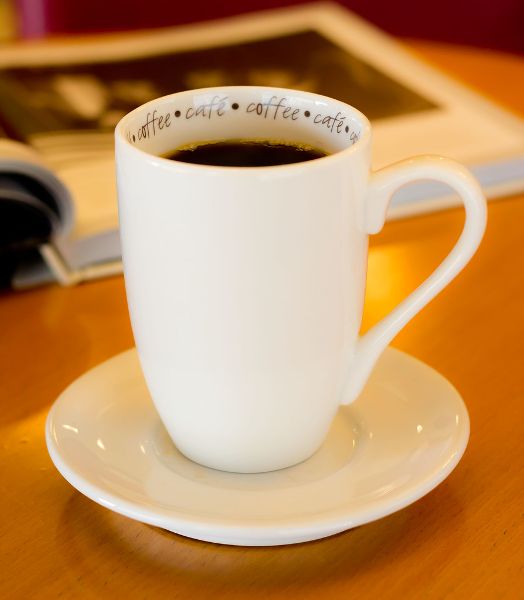
Polyphasic versus Biphasic
If there is a group of people with the resources and will to hack the circadian rhythm and reduce the hours of sleep needed, it would be the National Aeronautics and Space Administration (NASA). Every hour an astronaut is in space is expensive, and every hour they are sleeping is an hour they could be working (Figure 3.17). Yet even NASA scientists have not Figured out a way to get around the fact that most of us need around eight hours of sleep and a ten-minute nap every day. This is biphasic sleeping: two sleep periods every twenty-four hours. Solo sailors are also interested in finding a way to sleep less and still perform optimally, as they may be at sea for days and must keep their sailboat safe and on course.
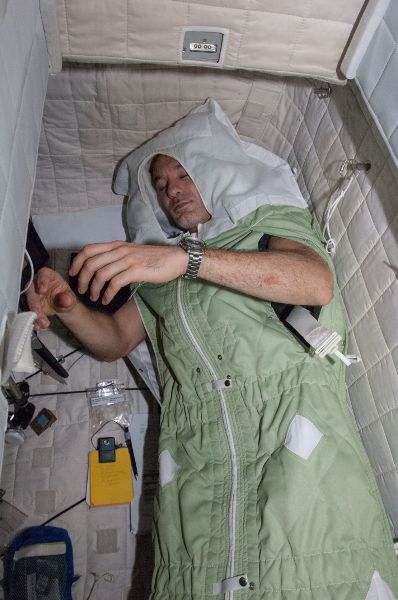
Consequently, Claudio Stampi, a sleep specialist and expert round-the-world sailor, was a leader in the development of polyphasic sleeping for sailors, athletes, and others in extreme situations, including outer space. One form of polyphasic sleeping is taking a thirty-minute nap every four hours, for a total of three hours’ sleep in a twenty-four-hour period (Figure 3.18). However, even Stampi himself, a self-proclaimed biphasic sleeper, is clear that polyphasic sleeping is only for extreme events and is an unhealthy practice long-term.
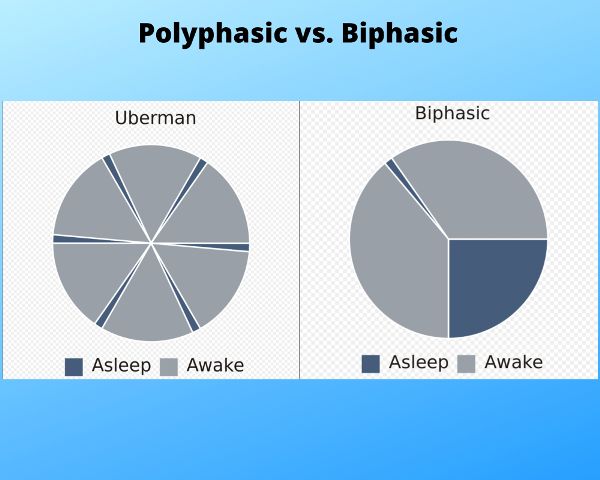
Despite this, the concept of gaining additional waking hours each day became irresistible for laypeople, who see it as a way to potentially add years of awake time to a person’s life. Based on sleep debt research, however, the health damage caused by this sleep schedule would likely actually take several years off a person’s life and lessen the quality of their living years by diminishing cognitive function, lowering mood, reducing physical abilities, and more. In spite of the contradiction, the practice has taken off and gained a following. It is an unfortunate misinterpretation of Stampi’s research.
Another probable misinterpretation related to circadian rhythm research is regarding news of a bygone sleeping pattern. In the past, this theory purports, the schedule was to sleep several hours at night, awaken at midnight for a couple of hours, and return to sleep for several more hours. Some reported that this is the biphasic sleeping pattern we are all meant to follow. This practice seemed to originate around the 1700s among a group of Western Europeans: after sleeping several hours, they would wake up for singing, sex, praying, or storytelling, then finish the rest of their slumber until morning.
While it made popular headlines, evidence indicates this was an isolated practice and that there is no biological justification for it. The jury is in: based on the scientific examination of human circadian rhythm over the ages and in current times, we have indeed evolved to be biphasic sleepers—that is, sleeping around eight hours each night with a ten-to-twenty-minute nap in the afternoon.
1 “The 2017 Nobel Prize in Physiology or Medicine—Press Release,” Nobel Prize, accessed May 28, 2021, https://www.nobelprize.org/prizes/medicine/2017/press-release/.


